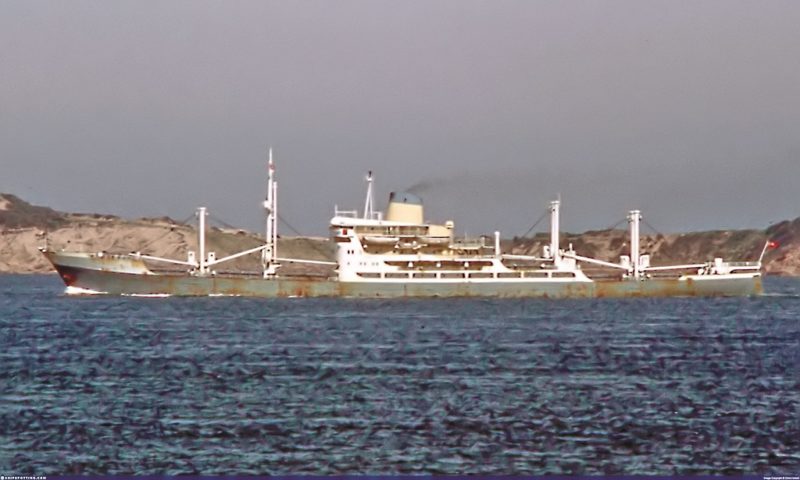
Man Overboard on Tri-Ellis
All ships must conduct a lifeboat muster and drill at prescribed intervals. On this particular day the muster and drill were scheduled to commence at 4 pm. The start of the exercise was to be announced by the ship sounding the Emergency Signal on the whistle and internal bells. At about 3pm we were all sitting in the mess room just starting our afternoon coffee break when the emergency signal was sounded. Not sure if this was a mistake as it was one hour early, we responded to it as if it was an actual emergency which as it turned out it was. On arrival at my allocated lifeboat we (the lifeboat crew) were told to quickly launch the boat, board it and lower it as one of the crew had fallen over the side. We carried out the order and headed off in the direction being indicated to us from the ships bridge as the ship was now stopped, and we were too low in the water in the lifeboat to see a small bobbing head. While we were doing this a group of passengers mostly family members of public servants who worked on Nauru gathered on the upper deck watching the drama. I was later told that one of the passengers asked one of the stewards why there was someone in the ocean, to which the steward replied tongue in cheek, “we always throw someone overboard just before a boat drill” and the passenger believed him, passing the word on to the others. We quickly recovered the crew person and returned to the ship where the lifeboat was retrieved, and the crew person taken to the ship’s hospital for observation. By now it was 4 pm and we thought that what we had just done would satisfy the drill, but this wasn’t the case. An ‘actual’ scheduled regulatory drill still had to be carried out to meet legislative requirements. The rescued crew person seemed okay when we had him back onboard but hitting the water, having fallen from the equivalent height of a two-story building, would have been like hitting cement and for the next few days he was seriously unwell, badly bruised and in pain.
JOHN OXLEY
After paying off the Tri-Ellis in Melbourne and arriving back in Brisbane I worked on the Brisbane River on a variety of tugs, barges, dredges and in particular the pilot vessel and buoy tender the SS John Oxley.
The main function of this vessel was servicing the navigation buoys and lights in Moreton Bay. Its secondary function was as a relief pilot vessel in the port of Brisbane when the regular pilot vessel, Matthew Flinders was unavailable because of maintenance, provisioning, crew leave or bunkering. I was onboard when it was acting as the pilot vessel. We would take up station off Caloundra or in the lee of Cape Moreton. If it were too rough to stay in a fixed position, we would steam around waiting for a call. The pilot transfer was conducted using a wooden, clinker-built, whale boat.
SD FITZROY
Another job I had during this period was a ‘delivery job’ taking the dredger SD Fitzroy from Brisbane to Bundaberg. One of the conditions of the delivery was that we would receive 14 day’s pay, even though the voyage should only take about 48 to 72 hours depending on the weather, this was what was called a ‘run job’. This was an old wreck of a dredger and because the voyage was only supposed to take 48 to 72 hours there was no refrigeration, so all food was kept in an ice chest with several blocks of ice. I say, ‘all the food’ and by that, I mean a few dozen eggs, a few loaves of bread, some butter and a couple of pounds of sausages sufficient to last the voyage. It had limited space for coal bunkers, so a few skips of loose coal were dumped on the forecastle deck. The funnel came up through the forecastle meaning that all the smoke and soot from the coal burning fires in the stokehold would blow back across the ship smothering the person steering the ship as it had an open wheelhouse. To add to the misery of the seaman who was on watch steering the ship, the compass was graduated in quarter points. Between that and the bad weather it was a constant job trying to hold the vessel on course. There was only the captain and one officer and us four seamen. After leaving the wharf in Brisbane we managed to get as far as Moreton Bay where, because of the weather, we anchored for the night. The next day we steamed into worsening weather and set course up the coast. We made slow headway and 48 hours later when we should have been in Bundaberg, we were still battling up the coast. The voyage ended up taking about 90 hours during which time the ice melted, the food ran out, the extra coal had to be shovelled by hand from the forecastle deck down to the stokehold. I must confess that it was an interesting experience.

WANGARA
In January 1965 I joined the ship MV Wangara as bosun in Melbourne. By good fortune it just happened to be on charter to the West Australian State Shipping Service and was sailing for Fremantle where my wife was. After one voyage up the coast of Western Australia to Dampier, Port Hedland, Broome, Wyndham, Derby, Darwin and back to Fremantle I felt it was time to look at a shore job for a while and to spend time with my wife and children. A chance visit to the union official of the Ship Painters and Dockers Union Paddy Troy, a legendary figure in Fremantle, led to a brief discussion out of which a job materialised in the State Shipping Service, rigging loft in Fremantle, splicing rope, and wire, making cargo nets and cargo slings, sewing canvas. I started the next morning. The salary was £18 per week, which really wasn’t such a good wage back then. But while I was determined to make it work and never missed a day for the next three months, deep down, I knew that I needed a better job with better prospects if my ambition of staying ashore was to work.
SHIP BERTHING CREW
Sometime around June 1965, while still working in the rigging loft, word filtered down through the grapevine that the Fremantle Port Authority were looking for a new member of the ‘ship mooring gang’. This was a plum job, and I knew there would be a lot of competition, but I concluded that if I remained in my comfort zone and simply accepted the status quo I would be giving in to the forces that had been holding me back and nothing was going to change. They had to be faced down, so I dropped off a letter expressing my interest and within a day I was contacted and told to be at the Port Authority building at 4 pm for an interview with the berthing master and the Harbour Master. The next day I was again contacted to say that I had the job. Start 6 am the following day. The hours were long, regularly going from 6 am to midnight with lots of stopping and starting. It was not unusual to have a few hours off waiting for the next ship to arrive or depart while at other times running from one ship to the next.
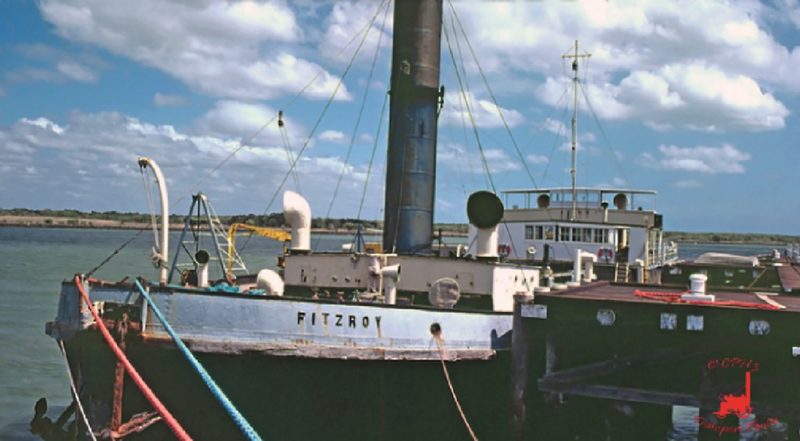
SPLASH BOARDS
For many of my early years at sea there were no environmental concerns about shipboard sewage. Toilet contents were simply flushed over the side through outlets in the ship’s side. While this wasn’t so much a health hazard while the ship was at sea it was problematic when a ship was in port because as the end of the flushing pipe exited the ship side on the wharf side, the contents were simply dumped onto the wharf. Not only did this foul the surface at the edge of the wharf it could also happen that if someone were to be standing on the wharf beneath a flushing pipe the contents of a flushed toilet would land on or around them. This was most likely to happen to waterside workers queuing to board the ship. One solution that was introduced back then was to construct ‘splash boards’ that when in port were lowered over the wharf side of the ship to cover the pipe exit point and then secured in position, the idea being that the toilet contents would hit this board and instead of spewing onto the wharf would simply drop vertically, hopefully into the water but more often than not it would land and accumulate on the waleing piece (a length of heavy timber just below the wharf face that extended out about half a metre). While the initial purpose of the ‘splash board’ solved the problem for those on the wharf it created a problem for those of us in the mooring gang as we would often have to get onto the ‘waleing piece’ to assist in getting a heavy mooring line onto the wharf for securing onto a bollard. There was little we could do about it and fortunately in time ships had holding tanks for sewage.
MASTER OF HARBOURS AND RIVERS
Through my job in the mooring crew, I got to mix with harbour pilots, launch and tug masters and other maritime industry professionals. As they got to know me and my background, they encouraged me to study for a Certificate of Competency in case I ever wanted to go back to sea. I was unsure if I was capable of this until I was put in touch with an elderly ex Harbour Master, Captain Trivett who ran a small school out of a back room of his ‘grace and favour’ house in Fremantle. I approached him and after some discussion he suggested I start with the Master of Harbours and Rivers Certificate of Competency for the Swan River and Cockburn Sound, an abbreviated version of a Pilots Exemption. It was an oral exam so only required memory. He gave me a book of notes for this qualification and instructed me to study and memorise them. I studied and whenever possible between working commitments this old ex Harbour Master would verbally test me repeatedly until he felt I had the knowledge ‘verbatim’. He seemed to find in me an avuncular understanding and invested in me the wisdom and confidence I lacked. This was the first test that I had taken since leaving school ten years earlier. I passed and was issued with the Certificate of Competency. This was the one that demonstrated to me that I was better than I had led myself to believe. It caused me to reflect and take stock of myself and it was at that moment I learnt to believe in myself and the decisions I made. Over the following years I studied for the higher and much more complex qualifications.
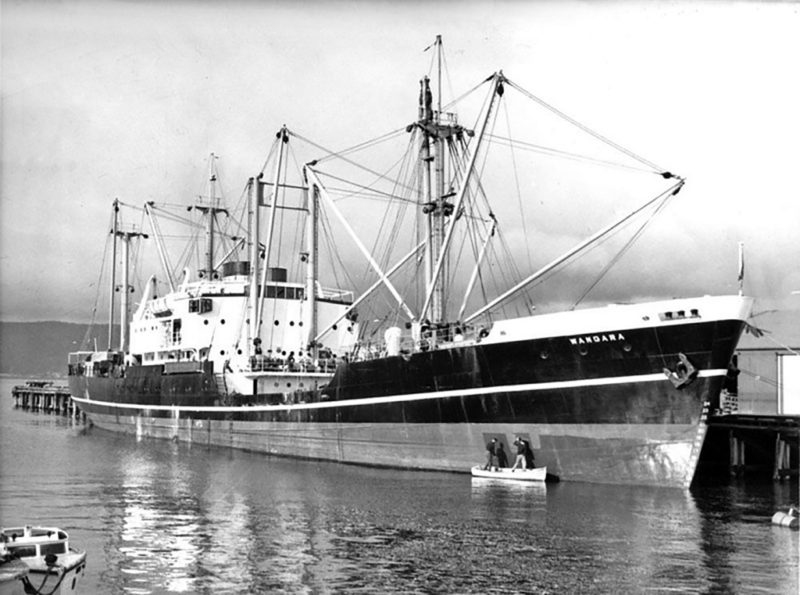

I BECOME A DECK OFFICER
In late 1969 while still working in the mooring gang, a position was advertised for a 3rd officer on a small coastal ship the Clevedon, registered in Panama and later with a name change to Clieveden it was registered in Fremantle. The ship was trading on the West Australian coast carrying dry bulk cement from Fremantle to Dampier, Point Murat in Exmouth Gulf, Point Samson, and Port Hedland. As I now held seagoing Certificates of Competency I applied for the position. An interview was arranged, and I was given the job. The voyages were short and leave provisions were generous.
One of the unusual things about this ship for that time was that it didn’t carry the traditional Radio Officer (long before GMDSS). This meant that the deck officers had to hold a Commercial Radio Operator’s Certificate of Proficiency Third Class to be able to operate the radio equipment (a double sideband and single sideband voice radio) legally and technically. With a bit of practice and some study I took the test and passed.
As the ship was on a regular voyage to and from Fremantle it was decided that one of the officers should be our union representative. I became the ships representative on the Merchant Service Guild (later the Australian Maritime Officers Union) committee of management. Some years later I decided to contest the position as Union Secretary. I had been on the COM for quite some years and on occasion I had relieved the union secretary so when the election came around, I nominated myself. There was only the two of us as candidates, the incumbent and me. Unfortunately, and I will never know how I would have gone because the Returning Officer ‘found’ that the person who seconded my nomination was a member of the NSW Branch of the Union and legally he had to be a member of the West Australia Branch. Hence, I was disqualified.
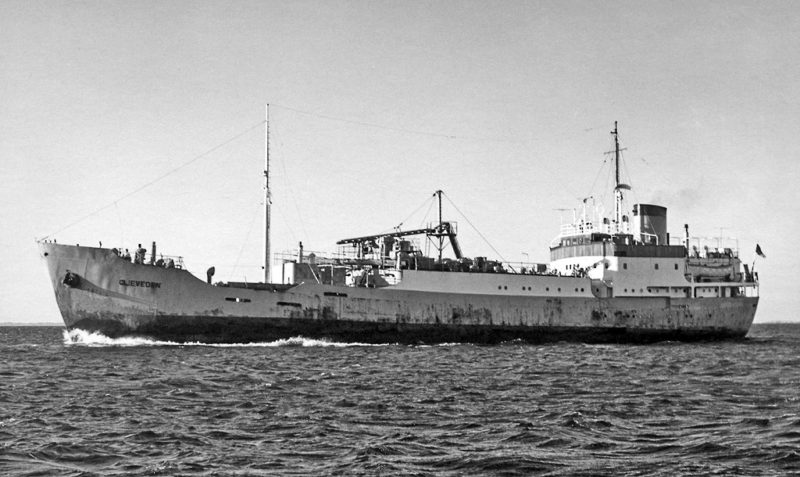
AN ENCOUNTER WITH A CYCLONE
One incident that made life at sea on this ship somewhat dangerous (because it was only a relatively small ship) was an encounter with a particularly violent tropical cyclone in 1969. With the cyclone tracking down the coast while we were tracking north it was clear that if we both continued as we were, we would clash at around NW Cape. After some discussion between the Master and us officers it was agreed that the best action to take was to change course to due west and attempt to position the ship in the ‘navigable semi-circle’. We approached NW Cape with the cyclone still about 120 miles north of us and showing signs of the expected re-curvature to the SE, so we made the course alteration to due west, knowing that while this would take us away from the general direction of our destination in Port Dampier it would also take us away from the expected ’path’ of the cyclone to the southeast and behind us. Instead of passing behind us as we expected, the cyclone curved in a westerly direction and ran roughly parallel to our course and close enough to be giving us a terrible battering. The weather was seriously bad, the sky was completely covered with dense cloud, the rain from the cyclone was torrential and with the ship moving heavily and violently in huge seas. It was not possible to obtain a sextant sight to enable us to plot at least an approximate position (there was no GPS in those days) so we had to keep running in a westerly direction on ‘dead reckoning’ and also using traverse tables for the ‘day’s’ work’ calculation technique. During the following 48 hours the cyclone progressively curved to the SE and fell away behind us, the weather moderated then cleared and we were able to get sextant sights. From these ‘sights’ we established that we had run quite a distance into the Indian Ocean. After two days steaming due east, we sighted the coast and resumed the coastal voyage. While little structural damage had been done it had been an extremely dangerous situation.
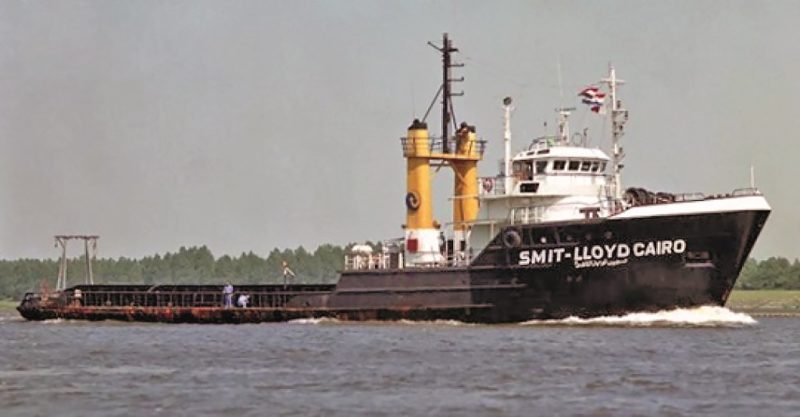
PROMOTION TO SECOND OFFICER
In 1971 I was landed ashore In Port Hedland with acute appendicitis and after ten days in hospital (there was no laparoscopic surgery in those days) I was flown home to Perth. After another two weeks post-operative recovery I was cleared by the company shipping doctor and re-joined the ship for my next ‘swing’ but this time as 2nd mate. My promotion was sudden and the result of an incident involving a heated verbal exchange between the then 2nd mate and the duty able seaman that quickly escalated into a violent king hit sending the 2nd mate to hospital with a broken jaw and the AB being instantly dismissed.
An anecdote: A steward has a psychiatric episode
Another incident around this time involved one of the ships stewards. I was the navigation bridge watchkeeping officer (3rd mate) when at about 9 pm the captain appeared beside me in a state of mild agitation and directed me to ‘call the bosun’. He revealed that one of the stewards, while armed with a length of small chain and a large knife, had stormed into the officer’s saloon where several officers were enjoying a general discussion. The officers quickly exited out of one door and alerted the captain. Not sure as to where this armed and possibly dangerous steward was lurking, the captain, the bosun, the chief officer and two of the biggest ABs went in search of him but not before the captain instructed me to, “Shut both wheelhouse doors and if he were to storm the bridge, ring the engine room telegraph bells and they would rush to my aid”.
Taking into consideration the time it would take for my would be rescuers to get back to the bridge I was not particularly confident for my safety. Shortly after they set out the chief engineer arrived on the bridge. He was apparently unaware of the unfolding situation but was aware that something was amiss as he told me he had a steward locked in the wardrobe in his cabin. It turned out that after the encounter with the officers and their rapid exiting out one door, the wayward steward ran out the other door which just happened to lead past the cabin of the chief engineer. The steward, in his apparent paranoia thinking that he was being chased, entered the chief engineer’s cabin, and said. “can you help me, everyone is after me”. The chief engineer quickly noticing that the steward was armed politely said, “Sure, I will help you (as you would) just climb into my wardrobe, I’ll lock it behind you, no one will know where you are, and I won’t tell them so you will be perfectly safe”. The steward thanked him and did exactly what he was told to do. With the steward now secured in the wardrobe the Chief Engineer left his cabin and came up to the navigation bridge, making sure to lock his cabin door after him in case the steward smelt a rat and broke out of the wardrobe. The search was called off, the steward was removed from the wardrobe and placed in an empty locked cabin under an external watch by the on-duty seaman. A message was sent to our agent in Fremantle explaining the situation and requesting that the steward be apprehended by the police and landed ashore. We anchored off Carnarvon the following morning to await what we expected to be a large launch manned with police. To our surprise a small 5 metre ‘tinny’ powered by an outboard motor was observed approaching with two people in it. On arrival at the ship the larger of the two occupants was a ships agent in Carnarvon who had been contacted by our agent in Fremantle to arrange the transfer of the steward into custody for medical assessment boarded the ship and without any more to do told us to leave everything to him (he was a tough Northwester). We cautiously opened the cabin door only to find a very remorseful and sheepish steward, perfectly calm and quite happy to be taken ashore. The last view we had of him was sitting happily in this little tinny speeding towards Carnarvon and never to be seen again.
I remained serving on this ship until 1972 when the contract for delivery of cement was completed and we were all discharged. I undertook my exams for my First Mate Certificate of Competency.
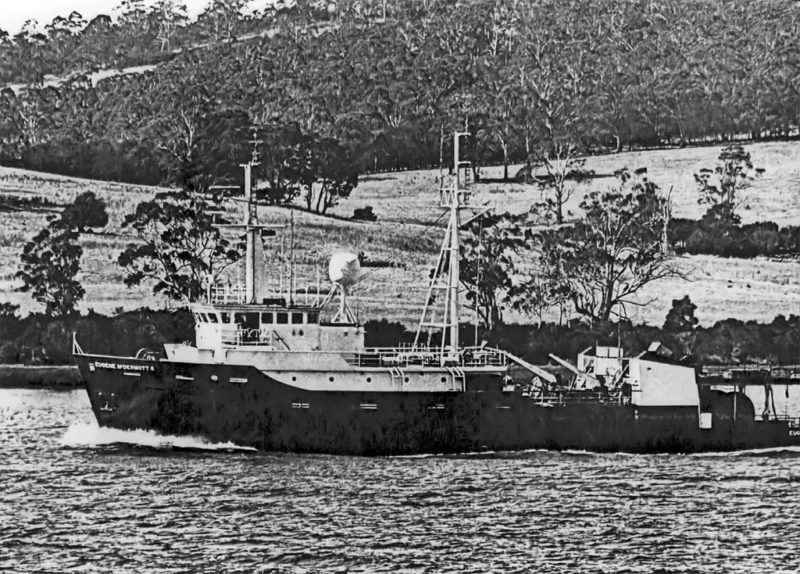
CHIEF OFFICER
Not long after I was contacted by the marine superintendent of a company in Fremantle who offered me a relieving position as chief officer on a large ocean-going tug and rig supply vessel the Smi-Lloyd 32. The relief was for three months, and the vessel was working out of Fremantle to the semi-submersible oil rig Ocean Digger off Rottnest Island and the Jack Up rig Jubilee at the bottom of Cockburn Sound. It was dangerous work manoeuvring close alongside these large, fixed platforms in weather to snatch heavy containers and other equipment swinging from under a crane. But it was good experience especially ship handling. As there were only the two officers onboard, myself as chief officer and the ships master with both of us doing 6-hour navigation watches (6 on and 6 off) it sometimes fell to whichever of us was on watch at the time to conduct the ship handling manoeuvres. I was sorry when the relief ended.

MY LAST SHIP AT SEA
My last ship at sea was in 1972 as chief officer on a seismic survey vessel Eugene McDermott II working in the Indian Ocean and the Timor Gap towing a 2 mile long seismic cable. One afternoon while I was the bridge navigation watchkeeping officer, steaming along happily with the echo sounder showing a depth of 66 fathoms of water below us and the navigation chart showing the same depth all round us I was at peace but bored. That was until I suddenly noticed the depth trace on the echo sounder was rapidly rising and the warning alarm sounding. Helpless to do anything as it was rising so rapidly, I could only stare at it as the depth of water under the ship rapidly reduced. At 6 fathoms the trace suddenly stopped rising and ran horizontal for about 500 metres then suddenly fell back to 66 fathoms. We had crossed an un-charted sea mount. Once back in port the discovery was reported to the navy Hydrographic Department for investigation. They later confirmed the sea mount, and it has since been marked on all navigation charts for the area.



Comments
Sorry, comments are closed for this item